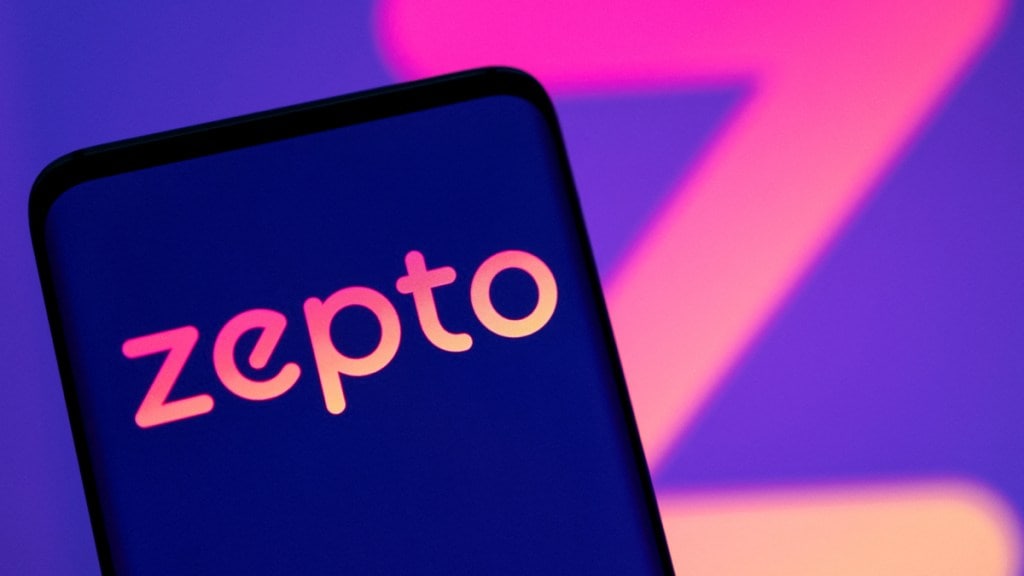The name Zepto is derived from the shortest unit of measurable time in Physics. But the creators of that name – two 20-year-old Stanford University dropouts – seem to be defying physics for the time being.
The quick commerce player, which started operations just two-and-a-half years ago after morphing from its previous avatars, is present across seven cities, operates around 240 dark stores, maintains over 6,690 stock keeping units and has doubled its daily delivery capacity to 350,000 orders in just over a year. The icing on the cake, of course, came last month when it raised $200 million at a valuation of $1.4 billion, thereby ending an 11-month unicorn drought in India. That’s not all — Zepto is planning another funding round ahead of its planned listing by early 2025.
If all this sounds like an Alice in Wonderland kind of scenario, given the rapid descent of competitors like Dunzo, hold on. Aadit Palicha, Zepto’s co-founder, says the focus from here on will be to turn Ebitda (earnings before interest, taxes, depreciation, and amortisation)-positive in 12-15 months.
Apart from his investors, not many would be convinced with that assertion. After all, the biggest challenge for quick commerce is the burn. Last mile logistics, dark store operations and perishable goods losses, all make it very challenging. Plus, low margins in grocery are a harsh reality that is difficult to handle. So it’s a struggle, if not a mirage, to make the business profitable, many say.
But Zepto is unfazed by the noise outside. The company admits it spent Rs 3.75 to earn a rupee in FY22 and made a loss of about `390 crore. But since then, it claims to have significantly improved on these numbers. In its pitch deck to investors, compiled with support from Boston Consulting Group in May this year, Zepto said it has reduced its cash burn from around Rs 90 crore in September 2022 to about Rs 55 crore in April 2023, has doubled annual sales from around Rs 2,500 crore in August last year to around `5,000 crore in March this year, and has driven up its average order value by about 40% year-on-year.
The company has managed to reduce its dark store rent costs as a percentage of total sales from 2.5% in June 2022 to 1.5% in March this year. Also, it has avoided the temptation of getting into newer pincodes and areas. Instead, it has focused on optimising for efficiency, increased output delivery and ensured it remained within the promised delivery median time. That has, in turn, driven customer retention rates. That’s a sound strategy as there is likely to be a challenge on scaling beyond metro and large cities. That’s because the volume of daily orders needed in each store is critical for profitability.
Palicha says the current median delivery time is 12-13 minutes and the effort is to bring this down to 8-9 minutes by the end of the year. Viral Jhaveri, chief growth officer, Zepto, adds: “The whole idea of proximity and speed is something that we realise users care about a lot. As the estimated time of arrival comes down, our conversion and retention rate from the same location goes up.”
The cost of customer acquisition, Zepto says, is half of what other players in the segment incur due to several tech-based optimisations. “Late last year, we simplified our entire fee structure. Today, for an average user whose cart value is over `199, we do not charge any delivery fee. This is different from what other food delivery and quick commerce players do. This has led to an increase in our customer retention numbers to increase, and has also reduced the pressure on acquiring new users,” adds Jhaveri.
“Pricing is another area users care about quite a bit. We noticed that customers have the option to compare prices across online platforms as well as offline. We have invested a major chunk of our efforts on optimising price levels,” Jhaveri says.
He explains, since grocery shopping is generally a multi-item cart, a single user isn’t motivated to check the price of each item across different platforms. “We have managed to be extremely competitive on 20% of our assortment that mostly include known value items like daily eggs, fruits, vegetables etc and certain home and personal care items. On the remaining 80% of our assortment, we have tried to be at par with competition,” Jhaveri says.
As a result, an average order on Zepto is about Rs 15-20 cheaper than on any other online platform. A major driver for lower Ebitda margins and cash burn has been increase in advertising income. So the start-up has made significant changes in its SEO strategy to achieve a deeper integration with Google and Meta. It has shut down affiliate marketing efforts, as a lot of very low quality users were coming in through this medium. Zepto hasn’t spent on print ads at all and its outdoor ads have remained minimal. Zepto also plans to expand its new offering Zepto Cafe that is currently operational in Mumbai, to all seven major metro cities.
Zepto Cafe offers food ranging from meal combos to snacks and beverages like tea and coffee. Initially launched in partnership with Chaayos and Rebel Foods, the platform has reduced its dependence on partner outlets and currently prepares most of its cafe units inside their dark stores. It has 20 such cafes currently, and plans to set up 40 more in the next three quarters. The cost of setting up cafes is around 50% lower than that of darkstores, and offers 3x profit margins over FMCG or grocery items. “We see Zepto Cafe as a major profitability driver for the overall business. Hence, we aim to scale this up considerably in the coming days,” Palicha says.
The company is also developing in-house brands across categories such as meat and home essentials. “3%-4% of our sales come from in-house brands. We want to get to 10-12% soon,” adds Paricha.

